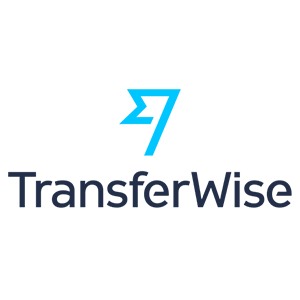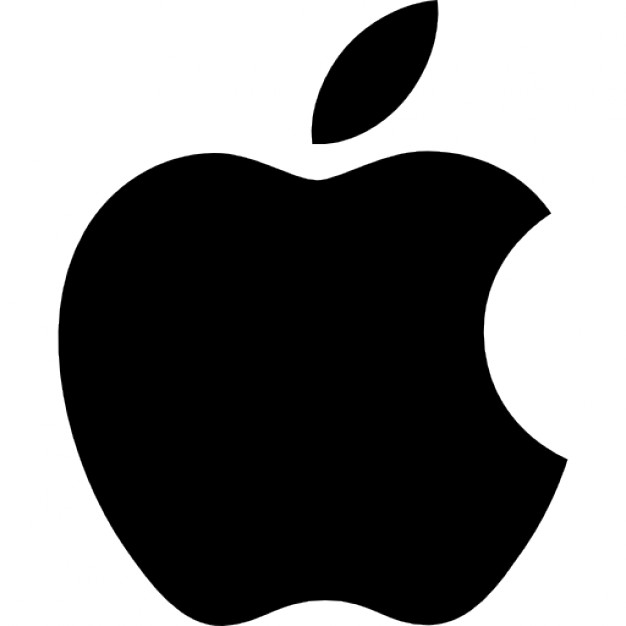
On Building A Menswear Brand And Growing 70% YOY
Hey there! I’m Danny Charbonnet and I’m the founder of All Citizens, a direct-to-consumer menswear brand perfecting premium, performance-based, everyday apparel at an incredible value. All of our products are made with performance fabrics and tons of comfort-enhancing designs and offered at half the price of other premium performance menswear brands - in short, we make better apparel at better prices.
I started the brand by launching a pair of boxer briefs that are made with a high-performance microfiber that wicks moisture, dries quickly, is luxuriously soft and ultra-breathable, and has incredible stretch and resilience. Then, I paired this incredible fabric with comfort-enhancing designs such as our signature Breathe Zones™, which are mesh areas strategically located where guys sweat the most (on the lower back and in between the thighs) for ventilation and airflow, Grip Thighs™ to keep the legs from riding up, a Horizontal Fly for a more natural movement when nature calls. This has since become our flagship product, but we have expanded to offer performance dress shirts (another best-seller), as well as training shorts, t-shirts, and socks.
Our customers are discerning men who prioritize quality and value and are looking for thoughtful products that astutely address the common pain points of wearing standard-issue garments rather than run-of-the-mill, branded seasonal apparel. They tend to lead more active lifestyles and are seeking clothes that will not only keep up with but complement their active lives. We see most of our customers fall into two camps:
Men (or their girlfriends/wives) who used to settle for the multipack underwear (Hanes, Fruit of the Loom) and who traditionally did not prioritize the comfort of their clothing but have recently decided it was time for an upgrade and that life is too short to be uncomfortable.
Guys who buy big name brands (Calvin Klein, Lululemon) and are used to paying high prices for premium garments, but have recently shifted to look for premium quality products at better prices - for instance, these customers have shifted to shopping at Harry's and Warby Parker.
The business has grown 70% YOY without any spending on marketing or advertising in the first few years, and minimal spend currently. We’ve been reviewed and ranked by multiple unpaid sources as the most comfortable underwear and the best bang-for-buck garments available.

What's your backstory and how did you come up with the idea?
It’s that classic story of I just started my first job and wanted to dress a bit better, so I started with upgrading my underwear, and like most men, went to a department store and grabbed a few pairs off the shelf. I immediately got sticker shock when the register rang up over $300 for just a bit more than a week’s worth of underwear, so I only bought a few pairs and immediately had buyer’s remorse. I wore the new boxer briefs and realized that although they were soft, they still weren’t that comfortable - they still rode up, I had to re-adjust them frequently, they absorbed sweat - they did not live up to their high price.
Entrepreneurship is a lonely road and it’s easy to keep your head down and be the only one working on building your company, but some of the best ideas I’ve had came from conversations with mentors, experts, and friends.
So I set out on a mission to find the best pair of boxer briefs but quickly realized that there wasn’t a company that satisfied the gap between better boxer briefs (with a lot of comfort-enhancing designs) and a lower price. Most of the new brands that sprang up offered marginally better products than the big name brands but charged the same price and often more. What I wanted was a brand that offered a week’s worth of great, comfortable boxer briefs (7 pairs) for $100 - and when I couldn’t find a brand that satisfied that simple request, I created All Citizens and the $99 Drawer Refresh, where you can get 7 pairs of performance-based, everyday boxer briefs for just $99.
I started All Citizens with just $3,000 and no retail, eCommerce, fashion, or design experience. I first launched to friends and family to get their feedback on the product, and I didn't expect word to get out about the brand. But very quickly, through word-of-mouth, I started getting more and more orders each month. The brand was being discussed on forums and was picked up by GQ, who reached out to me for an opportunity to share the brand in their monthly magazine.
At the time, I was living in New York City and working as a consultant focused on tech, so I would work long consulting hours, get back to the hotel (since I traveled to client sites every week) late at night and start working on All Citizens until 1 or 2 AM. But working late into the night on All Citizens never felt like work and it energized me more than anything I had ever worked on in the past. I enjoyed the challenge of building a business and bringing a physical product into the world, and it was encouraging and reassuring to receive emails from customers who mentioned they had been searching for years to find the perfect pair of boxer briefs that were truly comfortable, and that All Citizens surpassed their expectations and did so at less than half the price point of other premium brands. Seeing the number of orders increase without any paid marketing or advertising and receiving these emails more frequently from customers made me realize that I needed to dedicate more time to All Citizens, so I quit my job at AWS and set off on the adventure.
Take us through the process of designing, prototyping, and manufacturing your first product.
The design process came naturally to me since I was designing the product for myself - I knew all of the pain points I wanted to address and had tried every brand from expensive designer labels to cheap multipacks. The challenging part was finding the right manufacturers and suppliers.
I’ll start with the design process. I didn't have any design or fashion background and had no material or fabric experience either, but this never crossed my mind or hindered me when I started designing the boxer briefs. What consulting had taught me was that I could learn the foundations of almost any subject very quickly, and because I found tinkering and building to be a fun process, I wasn’t completely lost or intimidated when I first started. I spent several weeks drawing designs, cutting the designs out of paper and old t-shirts, iterating, researching, and redesigning until I ended up with a very crude mock-up of what the boxer briefs would look like and the comfort-enhancing features that were built in.
Below was one of the first drawings I made of the design and features I wanted to include in the boxer briefs. The boxer briefs have since evolved to include several new and updated features.


The most challenging part of starting the company was finding the right manufacturer. I went to several trade shows and met tons of suppliers, and they were able to put me in touch with some of the manufacturers they had previously worked with. The challenge was that the suppliers at the trade show typically supplied larger brands that produced in the hundreds of thousands and millions of units rather than startups, so most of the manufacturers I spoke to were not able to work with me on such a small production run. They put me in touch with some of their subcontractors who handle smaller quantities, but I found that most of them did not hold high standards for construction and craftsmanship. Furthermore, I was very focused on offering the boxer briefs at a compelling and competitive price as well as offering the $99 Drawer Refresh for 7 pairs (meaning I needed to tightly control the cost of goods), but at the same time, I wanted to offer the highest quality fabric and construction - I wasn’t going to compromise on either, so this meant that I needed to get creative on reducing costs in other ways, for instance, reducing the shipping costs of transporting fabric from supplier to factory and minimizing import and export duties, taxes and customs fees.
I worked with and tested six different factories over 10 months - the first 5 did not work out due to low quality or high costs. By the 9th month, I was getting ready to give up on the idea since it was so difficult finding the right partners - I figured that maybe starting an e-commerce company required industry connections that I just simply didn’t have. In the 10th month, I came across one final partner and decided to give it one more try. I immediately knew this was the right partner to work with, not only because the prototypes I received from them were spot on, but also because I knew that their production lines had designer brands on them as well. I was working with one of their in-house design team and mentioned my initial quantity for the first production run of just a few hundred units, and they told me that it was too small and that I needed to convince the factory owner.
I called the factory owner from my apartment in New York - he was a friendly guy and took an interest in getting to know me since he was not used to speaking to someone so young and not from the industry. What was supposed to be a quick 15-minute call turned into an hour-long conversation where we talked about my background, my vision on the company, and my philosophy on delivering outsized value to customers - that high-quality products don’t have to come with an expensive price tag - that luxury should no longer be expensive. He said he was deeply impressed by my passion for building this company and my refreshing philosophy, and I convinced him to let me work with his factories during off-peak periods when his larger customers didn’t have their products on the production line. Most importantly, I convinced him to let me start with a very small quantity of products by offering to pay a larger deposit upfront. That call ended up being the most important conversation for starting All Citizens and my most important pitch.
Here’s a picture of the result, after years of customer feedback and iterations:

Another thing I wanted to improve upon was the notion of fancy and expensive product packaging. Going back to the time I went to the department store to buy boxer briefs, I realized that the product packaging on all of the brands was over the top and seemed expensive and wasteful. I completely understand the importance of a great unboxing experience and that products need to stand out on retail shelves, but I couldn't get over the fact that I, the customer, was paying for the cost of that expensive box by paying a higher price on an already expensive product - I was paying more money for throwaway packaging. From the beginning of All Citizens, I knew that to deliver outsized value at the price point I wanted, I needed to “trim the fat”, and fancy packaging is part of that fat. I opted for a simple product bag with minimal print and no dyeing to cut back on printing costs and improve recyclability. The bag is heat-sealed closed instead of having an adhesive strip since the strip cannot be recycled with the rest of the bag (so it would have been sent to a landfill instead). It also comes with an easy tear top for a quick and easy unboxing experience.
Describe the process of launching the business.
I had read everything I could find about some of my favorite brands such as Harry’s, Warby Parker, Bonobos, and Everlane (I read everything I could find about Jeff Raider) and loved to hear the stories of their early days - the four Warby Parker founders frantically answering customer service emails in the middle of their classes, and Andy Dunn having only $3,000 in his bank account at any given time for 3 years and not being able to afford a date he was on - all of the founders had the courage and mental fortitude to just get started on building a company and a product they believed in - I deeply respected their courage and it motivated me to bring my product into the world and just get started on the brand-building process.
The first production run, which was very small, cost just under $3,000, which I was able to fund with my savings. I shipped all of the inventory to my tiny apartment in New York City and stacked the boxes of inventory in my room and under my bed - it was quite the DIY set up, and when friends would come over and see the boxes, they shot a “not sure what’s going on over here, but ok...” kind of look.
I built the website using Shopify and took some of my photos to showcase the product. When the website went life, the only “marketing” I did, since I knew nothing about marketing or advertising or launching a brand, was to post on my social media about the launch of my new project. I got a few hundred views and a few orders in the first few days but after a few days… crickets… I immediately learned that bringing a product to life and building a website only grants you access to the starting line, and while I believed the product would speak for itself and customers would share the product through word-of-mouth, I quickly realized that although it’s easy to launch a brand and a product, it takes a lot of work and knowhow to have a successful launch with real traction - just because you build it, does not mean they’ll come.
I would personally pack, seal, and fulfill each order - I had a USPS box a few blocks away and would drop off the packages on my way to work. I would get 1 or 2 orders a day in the first few months, but then I noticed a steady increase in orders every week - it would climb bit by bit and I had no idea why (since I wasn’t doing any marketing at the time). I started emailing all of the new customers to thank them for their orders and ask them how they heard about the brand - word-of-mouth about a “better product at a better price” had been driving the sales, and one by one, each new customer would share All Citizens with another person.
One morning, I had packed a lot of orders the night before, and when I went to stuff them into the USPS box, I couldn’t fit all of them in - this was the first day I realized that I was onto something, but I still wasn’t doing any marketing or advertising at this point - I knew this had to change if I wanted to scale the brand.

Since launch, what has worked to attract and retain customers?
By far, the most important thing I’ve done is to treat customer feedback as our most valuable asset. If you’re willing to ask and listen, customers will tell you exactly what they want from your product, brand, and overall experience, and in the cases where they can’t articulate it perfectly, you’ll be able to read between the lines and invent on their behalf. But gathering customer feedback doesn’t need to be as explicit as blasting a survey to all of your customers - surveys work but you generally get a low response rate. Since the beginning, whenever a customer returned a product, I would always ask them to provide a reason for the return. I noticed that most of the reasons for returns were because our Grip Thighs were too tight, so I started asking these customers to help me by measuring the circumference of their thigh 12” below where their waistband sits. It turned out that all of their thighs were much larger than mine (I was the original fit model when designing our boxer briefs, and my thighs are very average in width), this taught me two things: 1) that I should stop skipping leg day because some of these thighs were clocking in pretty remarkable widths; and 2) that about 20 to 25% of my customers fell into this group of guys with larger thighs. This feedback and insight is the reason why I launched the Athletic Fit boxer brief which has a wider leg opening to accommodate guys with larger thighs. The Athletic Fit boxer briefs are one of our best selling products today.
The same process also led to the Quick-Access Fly - a lot of customers wrote in about adding a fly to our boxer briefs, but I didn’t want to add a standard-issue vertical fly since these didn’t function that well (you had to use 2 hands to pry things open… you get the idea…), and instead, decided to redesign the fly for a more natural movement when nature calls. I strongly believe that my relentless customer obsession and focus on the customer experience, customer service, and creating features that address the common frustrations presented by traditional garments are some of the differentiators of All Citizens.
When I launched the brand to friends and family, I didn’t have any experience in marketing, but I did understand that people enjoyed talking to their friends about new things they’ve discovered that have made an impact - new restaurants, new food and diets, new brands, new fitness classes, new cities they’ve been to. I knew that I had to encourage customers to share All Citizens, so I started a referral program early on. This helped drive steady growth in the early days. My advice to any new entrepreneur is that if you believe customers will love your product, make sure you incentivize them to share with their friends because any investment in referrals will pay dividends
Then, I started engaging customers through paid social ads on Facebook and Instagram. It worked decently well but there’s a lot of competition, especially for our target demographic, so it’s very expensive to bid for placement. Facebook and Instagram ads are by no means our highest ROI channel, but they do drive significantly more traffic with a good-enough ROI. My advice is to not get started on paid social right away - they make it very easy to burn cash if you’re feeling around in the dark, especially if you don’t have any experience in building engaging creative, and understanding algorithms. If you can afford to, I recommend working with a performance marketing agency to help get your paid social started.
For the entrepreneurs who want to do the Facebook and Instagram ads themselves, I’d recommend treating this decision, whether you should do it in-house or outsource as if you’re investing in individual stocks: people dedicate their careers to understanding the market and economic forces, and they come up with their methodology for picking stocks - do you think you can spend a few weeks reading online and taking a course and then immediately pick winners and beat the professionals with decades of experience? Maybe if you spent a few years getting experience, you’d be able to score higher than average, but as a founder, time is your most valuable resource so do you want to dedicate your time to learning the Facebook algorithms?
That being said, finding a reputable agency with solid performance is difficult. There are many “marketing agencies” online, so do your due diligence and ask for their client list, case studies, a demo of the dashboard for another brand they’re working with to see the results of their work, as well as a client reference to call and ask about their experience working with the agency.
How are you doing today and what does the future look like?
I’m proud to say that we have been profitable since around month 3 and our average CAC over the past 6 months is just $0.14 due to our low advertising spend. Admittedly, we could be spending more on ads and other forms of marketing so I am currently planning out a marketing execution plan that will balance investment into growth channels while maintaining our core principle of building a sustainable, profitable business that scales responsibly.
Since the beginning, I’ve resisted the temptation of following the traditional DTC startup path of raising massive VC rounds to pour millions into marketing and advertising with a “we’ll worry about profitability later” mentality. We’ve seen where this has led many companies, for instance, Casper Mattresses, who at one point was losing $300 per customer. Yes, there is something to be said for their meteoric rise in just a few short years, but as David Sacks (part of the PayPal mafia and is currently a General Partner and Co-Founder of Craft Ventures) put it, “Hypergrowth is easy when you’re selling dollar bills for 90 cents.”
Most of the large DTC brands in the past decade were able to capitalize on cheap customer acquisition through Facebook and Instagram and were able to achieve high ROIs through this channel, but over time, as more and more brands started paid social advertising, this channel became saturated and expensive. I forgot where I read this stat but even within the past 5 years, the cost to acquire customers through FB/IG has grown ~4x, and we’ve felt this ourselves. One of my top 3 projects is to find alternative marketing and advertising channels that will provide a healthy ROI - it’s been a challenge and a long process of searching and experimenting but I’m hopeful we’ll find the right channels soon.
My second focus is on improving the customer experience, which encompasses everything from streamlining the website to reducing customer service response times. Earlier this year, we successfully moved into new, state of the art warehouses that can fulfill orders in less than 2 minutes. The impetus of this move was to see if we could reduce shipping times from 1 week to something closer to Amazon’s 2-day standard. So, we invested in our distribution infrastructure and worked with multiple warehouses that are strategically located close to where most of our customers are. Because of this investment, we were able to reach all of our US customers with 3-day shipping, and 3-day shipping comes standard on all orders. Going back to my earlier point about customer obsession and focusing on customer experience - most brands would have charged customers extra for three-day shipping, but we decided to give it to customers at no additional cost.
Another project we have almost completed was to build out our customer service capability so that all customer requests are answered within 24 hours (we are targeting answering all customer emails within a few hours, but decided to give ourselves a public-facing buffer for a while until we are certain we can achieve the “few hours” response time).
A third area we are focused on is customer engagement on our social media channels. We admittedly haven’t invested too much time or focus on social media, but plan to do so in the coming months.
And finally, I am always working on new products to bring to market. We’ve got a few in the works right now and should hopefully launch a few this year and a few more early next year - stay tuned.
Through starting the business, have you learned anything particularly helpful or advantageous?
One of the most important things I’ve learned is that you should never go at it alone and you should always seek help and guidance. Entrepreneurship is a lonely road and it’s easy to keep your head down and be the only one working on building your company, but some of the best ideas I’ve had came from conversations with mentors, experts, and friends. Don’t be afraid to reach out and ask someone to grab a coffee (easier to do pre-COVID) or ask someone to make an introduction - you’ll be surprised by how open people generally are to meeting up.
One of the most common things I see from other entrepreneurs is that they forgo talking to others about their idea because they are afraid of their idea being stolen - this mentality is likely perpetuated by the movie The Social Network. Sure, you shouldn’t tell your idea to everyone and you should always vet who you share your idea with, but chances are, the expert you’re talking to won’t be passionate enough about the problem you’re solving to stop their busy life and build a competing product. You discovered this problem (likely because it has frustrated you enough) and you have the conviction and passion for solving this problem, and chances are you will be one of the few who will have the drive to act on this particular problem.
What platform/tools do you use for your business?
What have been the most influential books, podcasts, or other resources?
Podcasts:
- How I Built This - it’s great to hear the stories behind how the brand or idea came to be, the early days, and the struggle and grinds the founders went through. It’s encouraging to hear their stories and know that it was never all roses and that most of them took a long time to get to where they are instead of being overnight successes.
- From Scratch
- Pivot
Books:
Articles:
- David Sacks, who is part of the PayPal mafia and is currently a General Partner and Co-Founder of Craft Ventures, has great Medium articles.
- Andy Dunn, Founder of Bonobos.
Advice for other entrepreneurs who want to get started or are just starting?
Just get started - tinker, build, play around with ideas, experiment. You’ll likely be feeling around in the dark for a while, especially if you’re like me and didn't come from the industry or have industry experience. But just know that it is not as easy as launching a product and a website - a lot of work goes into building some of the products and companies you know and love. You will struggle, it will be hard, you will doubt yourself - these feelings and thoughts are all normal.
If you ever want some encouragement, read this article by Andy Dunn about the struggles he went through during the early days of founding Bonobos. We usually only hear about a company’s successes and rarely hear about the struggles the founders went through. When you find these stories, you realize that their journeys are rarely ever a bed of roses. They struggled, they were humbled, they almost gave up, they doubted themselves, they thought they were frauds, they thought they were crazy (and likely heard from multiple people that they were crazy and that their idea would never work) - they’ve gone through everything you will go through - just focus and persevere.
Are you looking to hire for certain positions right now?
Not this year but will likely hire a CMO, full-time engineer, and grow our customer service team early next year.
Where can we go to learn more?
If you have any questions or comments, drop a comment below!

Download the report and join our email newsletter packed with business ideas and money-making opportunities, backed by real-life case studies.

Download the report and join our email newsletter packed with business ideas and money-making opportunities, backed by real-life case studies.

Download the report and join our email newsletter packed with business ideas and money-making opportunities, backed by real-life case studies.

Download the report and join our email newsletter packed with business ideas and money-making opportunities, backed by real-life case studies.

Download the report and join our email newsletter packed with business ideas and money-making opportunities, backed by real-life case studies.

Download the report and join our email newsletter packed with business ideas and money-making opportunities, backed by real-life case studies.

Download the report and join our email newsletter packed with business ideas and money-making opportunities, backed by real-life case studies.

Download the report and join our email newsletter packed with business ideas and money-making opportunities, backed by real-life case studies.































